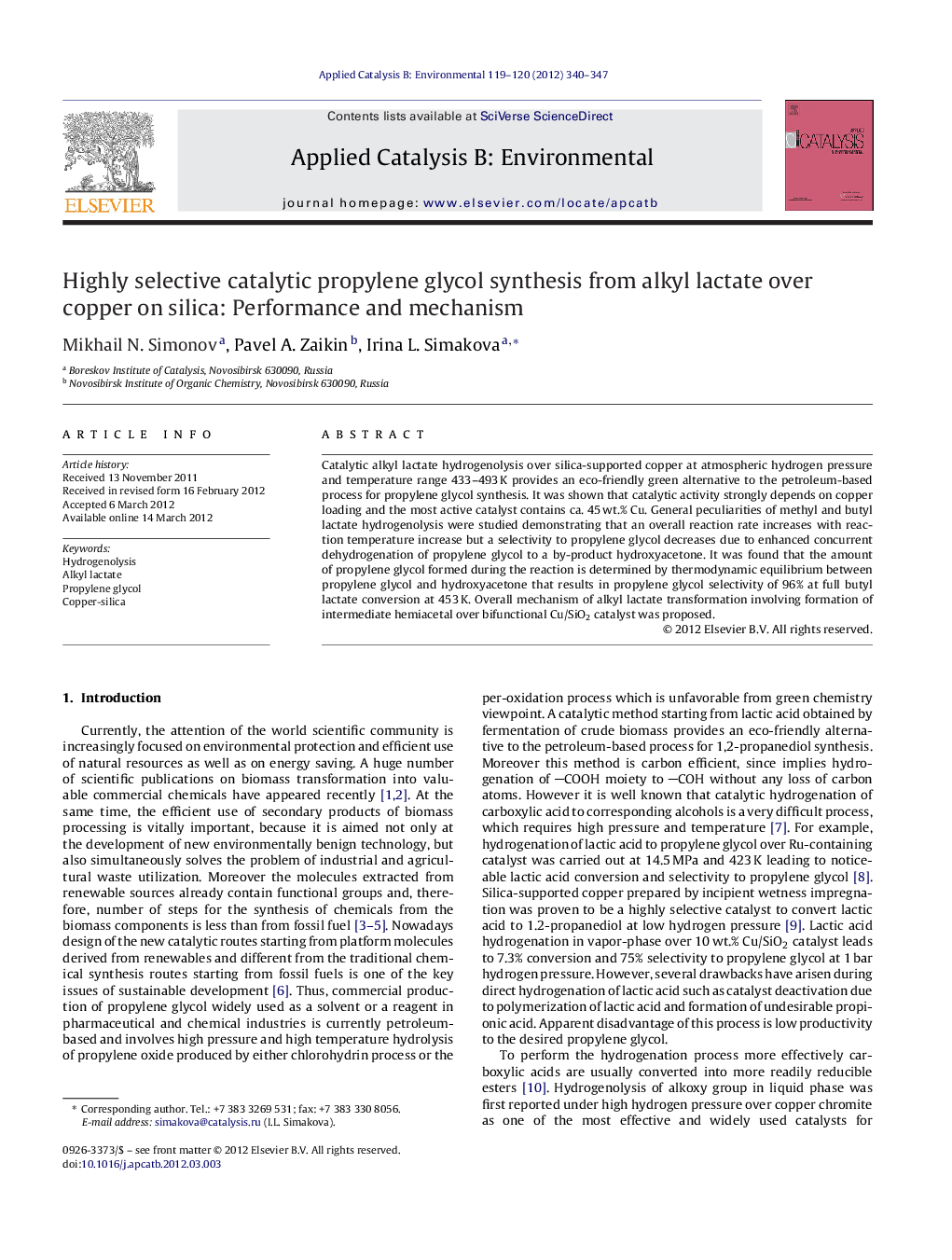| Article ID | Journal | Published Year | Pages | File Type |
|---|---|---|---|---|
| 46669 | Applied Catalysis B: Environmental | 2012 | 8 Pages |
Catalytic alkyl lactate hydrogenolysis over silica-supported copper at atmospheric hydrogen pressure and temperature range 433–493 K provides an eco-friendly green alternative to the petroleum-based process for propylene glycol synthesis. It was shown that catalytic activity strongly depends on copper loading and the most active catalyst contains ca. 45 wt.% Cu. General peculiarities of methyl and butyl lactate hydrogenolysis were studied demonstrating that an overall reaction rate increases with reaction temperature increase but a selectivity to propylene glycol decreases due to enhanced concurrent dehydrogenation of propylene glycol to a by-product hydroxyacetone. It was found that the amount of propylene glycol formed during the reaction is determined by thermodynamic equilibrium between propylene glycol and hydroxyacetone that results in propylene glycol selectivity of 96% at full butyl lactate conversion at 453 K. Overall mechanism of alkyl lactate transformation involving formation of intermediate hemiacetal over bifunctional Cu/SiO2 catalyst was proposed.
Graphical abstractFigure optionsDownload full-size imageDownload as PowerPoint slideHighlights► 96% selectivity to propylene glycol from alkyl lactate over Cu/SiO2 at 1 bar H2. ► Butyl lactate enables higher selectivity due to resistance of released butanol to side transformations. ► Mechanism of alkyl lactate hydrogenolysis is proposed where propylene glycol and hydroxyacetone are in thermodynamic equilibrium. ► Cu/SiO2 catalyst is stable for more than 200 h time-on-stream.
